Do you have a question about the Radio Shack PRO-162 and is the answer not in the manual?
Key operational buttons like SCAN, MENU, SRCH, TRUNK, WX, and their functions detailed.
Guidelines for safe and proper usage of scanner batteries.
Instructions for attaching the antenna and connecting headphones.
Procedures for data transfer and introduction to scanner terms.
Explains banks, turning on the scanner, and storing frequencies.
Customizing channels and banks with text tags for easy identification.
Guide for text entry and setting CTCSS/DCS codes for monitoring.
Explanation of CTCSS/DCS tone signaling systems.
Methods to copy/move frequencies and perform chain searches.
Initiating chain searches and programming search ranges/tags.
Utilizing fine tune, service, weather searches, and skip memory functions.
Scanning stored channels, manual selection, and delay feature.
Managing banks, scan lists, locking channels, and priority settings.
Using keylock, PC programming, and cloning scanner data.
Adjusting backlight, contrast, search speeds, and keytone.
Configuring battery save, CTCSS/DCS, and data skip features.
Receiving weather alerts, testing tones, and programming FIPS codes.
Programming FIPS codes and understanding the Skywarn function.
Configuring Signal Stalker I features like band, alerts, and logging.
Using the band meter and operating Signal Stalker I.
Setting up trunking mode, squelch, and programming trunked frequencies.
Selecting and programming specific trunked system banks.
Searching banks, managing banks on/off, skipping, and Motorola control.
Managing Motorola status bits and EDACS ID formats.
Searching EDACS IDs, holding, locking, and unlocking talk group IDs.
Using scan delay, monitoring IDs, lists, and manual ID storage.
Procedures for entering Motorola and EDACS talk group IDs.
Entering LTR IDs, scanning lists, and setting priority ID scanning.
Scanning Type I/Hybrid systems and using preset fleet maps.
Choosing preset fleet maps and programming custom fleet maps.
Programming hybrid systems, frequencies, and disconnect tone detection.
Common scanner problems and their solutions.
Information regarding potential radio or TV interference.
Procedure to reset the scanner and methods to reduce interference.
Guidelines for legal use, care, repair, and scanner specifications.
Key operational buttons like SCAN, MENU, SRCH, TRUNK, WX, and their functions detailed.
Guidelines for safe and proper usage of scanner batteries.
Instructions for attaching the antenna and connecting headphones.
Procedures for data transfer and introduction to scanner terms.
Explains banks, turning on the scanner, and storing frequencies.
Customizing channels and banks with text tags for easy identification.
Guide for text entry and setting CTCSS/DCS codes for monitoring.
Explanation of CTCSS/DCS tone signaling systems.
Methods to copy/move frequencies and perform chain searches.
Initiating chain searches and programming search ranges/tags.
Utilizing fine tune, service, weather searches, and skip memory functions.
Scanning stored channels, manual selection, and delay feature.
Managing banks, scan lists, locking channels, and priority settings.
Using keylock, PC programming, and cloning scanner data.
Adjusting backlight, contrast, search speeds, and keytone.
Configuring battery save, CTCSS/DCS, and data skip features.
Receiving weather alerts, testing tones, and programming FIPS codes.
Programming FIPS codes and understanding the Skywarn function.
Configuring Signal Stalker I features like band, alerts, and logging.
Using the band meter and operating Signal Stalker I.
Setting up trunking mode, squelch, and programming trunked frequencies.
Selecting and programming specific trunked system banks.
Searching banks, managing banks on/off, skipping, and Motorola control.
Managing Motorola status bits and EDACS ID formats.
Searching EDACS IDs, holding, locking, and unlocking talk group IDs.
Using scan delay, monitoring IDs, lists, and manual ID storage.
Procedures for entering Motorola and EDACS talk group IDs.
Entering LTR IDs, scanning lists, and setting priority ID scanning.
Scanning Type I/Hybrid systems and using preset fleet maps.
Choosing preset fleet maps and programming custom fleet maps.
Programming hybrid systems, frequencies, and disconnect tone detection.
Common scanner problems and their solutions.
Information regarding potential radio or TV interference.
Procedure to reset the scanner and methods to reduce interference.
Guidelines for legal use, care, repair, and scanner specifications.
| Type | Handheld Scanner |
|---|---|
| Modulation Types | AM, FM, WFM |
| Channel Capacity | 1000 Channels |
| Channels | 1000 |
| Display | LCD |
| Bands | VHF, UHF |
| Memory | 10 Banks |
| Power Supply | 4 AA batteries or DC adapter |
| Features | weather alert |
| Channel Steps | 5, 12.5 kHz |
| Antenna | BNC |


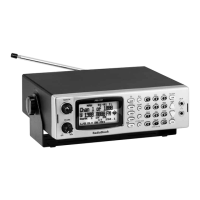
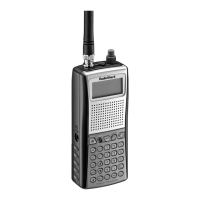
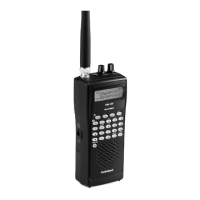
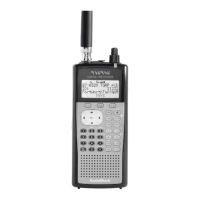
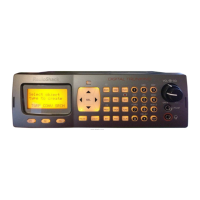


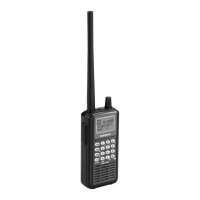

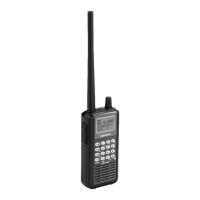
